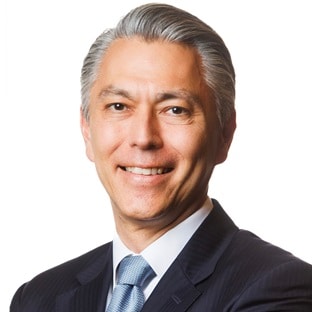
A strong set of results, reflecting the strength, resilience and quality of our people and portfolio. In a year marked by the challenges of the global COVID-19 pandemic, social unrest in Chile and commodity price volatility, we were safer, more reliable and lower cost.


-
Financial Results
-
Productivity
-
Future options
-
Inclusion and diversity
-
Downloads
FY2020 Financial results
Our results reflect the strength, resilience and quality of our people and our portfolio. We reduced our unit costs at all of our major operated assets and realised production or throughput records in a number of operations.
BHP delivered a strong set of results, safely achieved in the face of some significant challenges in our markets and in our operating regions. Our results were underpinned by our high-quality portfolio, great people with a culture focused on financial discipline, operational excellence and our contribution to social value.
We achieved an Attributable profit of US$8.0 billion, broadly in line with the prior year. Our operations generated robust free cash flow of US$8.1 billion, we invested US$7.6 billion in our assets, and our balance sheet remained strong, with net debt finishing at the low end of our target range.
On average, we lowered our unit production costs by 9 per cent across our major assets due to foreign exchange rates, better productivity and improved operating stability, including 11 per cent unit cost reductions at Escondida and WAIO. We achieved record production at WAIO, Caval Ridge and Poitrel; record coal mined at Broadmeadow and record average concentrator throughput at Escondida.
Our basic earnings per share was 2 per cent lower at 157.3 US cents per share, while our underlying return on capital employed was a strong 17 per cent. We announced a final dividend of US$0.55 per share, taking the total dividend for the year to US$1.20 per share, a return of US$6.1 billion to shareholders, the third year in a row we have returned over US$6 billion.
More on our financial results or our sustainability performance.

Underlying attributable profit of US$9.1 billion (footnotes 1, 3)

Underlying EBITDA of US$22.1 billion at a margin of 53 per cent (footnotes 2, 3)

Net operating cash flows of US$8.1 billion (footnote 1)

Declared a total dividend of US$1.20 a share

Underlying return on capital employed of a strong 16.9% (footnotes 1, 3)
(1) Includes data for Continuing and Discontinued operations for the financial years being reported.
(2) Excludes data from Discontinued operations for the financial years being reported.
(3) For more information on Alternative Performance Measures, refer to section 6.1 of the BHP Annual Report 2020
Productivity
- Escondida Water Supply Expansion project was completed in December 2019, on schedule and budget, further increasing total desalinated water capacity to 3,800 litres per second. Escondida has invested more than US$4 billion in desalinated water since 2006. This project enabled us to eliminate the extraction of groundwater for operational supply purposes at Escondida in FY2020, 10 years ahead of schedule.
- West Barracouta (Bass Strait) project is on schedule and budget and is still expected to achieve first production in the 2021 calendar year, despite delays in component delivery and equipment fabrication due to COVID-19 restrictions.
- WAIO is working to sustainably achieve supply chain capacity of 290 Mtpa over the medium-term.
We continue to drive down unit production costs

Future options
Inclusion and diversity

-
Inclusion and diversity in our supply chainPartnering with our suppliers to support our commitment to inclusion and diversity is one of the four commitments that underpins our aspirational goal to reach gender balance by CY2025. Over the past three years, this commitment has presented a huge opportunity to challenge ourselves, as well as more than 10,000 of our supply partners across 60 countries.With an annual spend of more than US$15.5 billion in FY2020, we continue to work in partnership with our supply partners to promote the values and standards of behaviour we’ve committed to in Our Charter and Our Code of Conduct, and to follow the Our Requirements for Supply standards.We establish and foster supplier relationships based on mutual commercial value built on foundations of long-lasting partnerships. Through these partnerships, we make decisions that positively influence those around us, such as:
- providing support and incentives to encourage our contracting partners to increase the diversity of potential applicants for roles across BHP locations, who make up approximately 60 per cent of our workforce
- encouraging our supply partners to support greater diversity through ergonomic design and product development. For example, working with manufacturers to make excavators and trucks more accessible and safer to use by a wide range of people, as well as easier to maintain
- working closely with supply partners to make sure the clothes we wear at our operations, the food we eat and the camps we live in are more inclusive
- introducing an online tool to our Australian supply partners to allow BHP to collect and track local and Indigenous procurement and diversity metrics. The data feeds into internal and external reporting and tracks against contract incentives and tender evaluation criteria. The metrics help recognise and reward supply partners who have embedded BHP’s values and are making a positive inclusion and diversity impact.
2020 case studies
2019 case studies

Sustainability Report 2020
Sustainability is a core value at BHP and to reflect its importance, we have refreshed our sustainability reporting in FY2020.

Climate Change Report 2020
The resources we produce are essential, now and for the future. And the world will need even more of many of them to transition to renewable energy and support global economic growth.
Annual Report 2020
Download and read our 2020 Annual Report.




